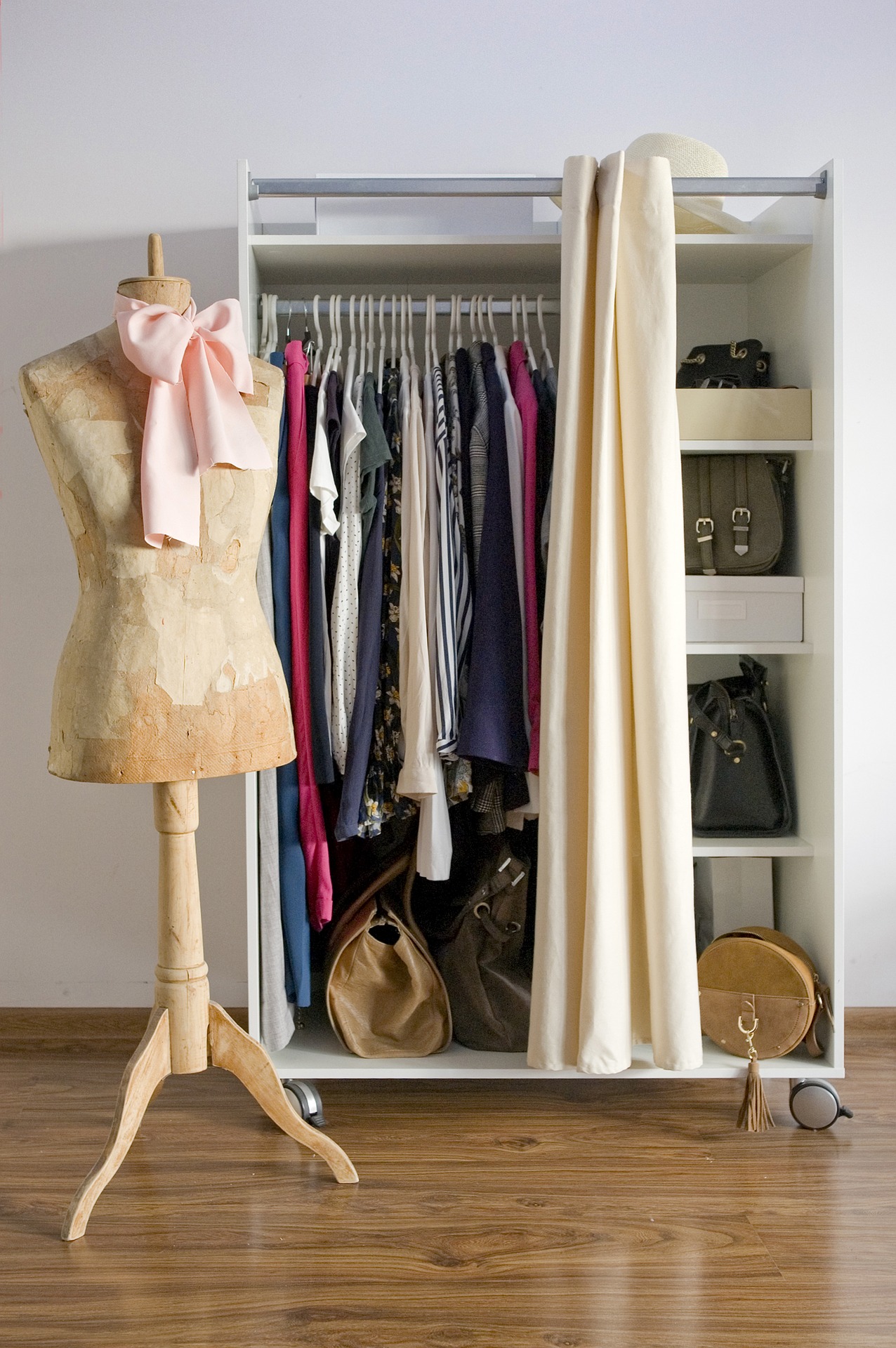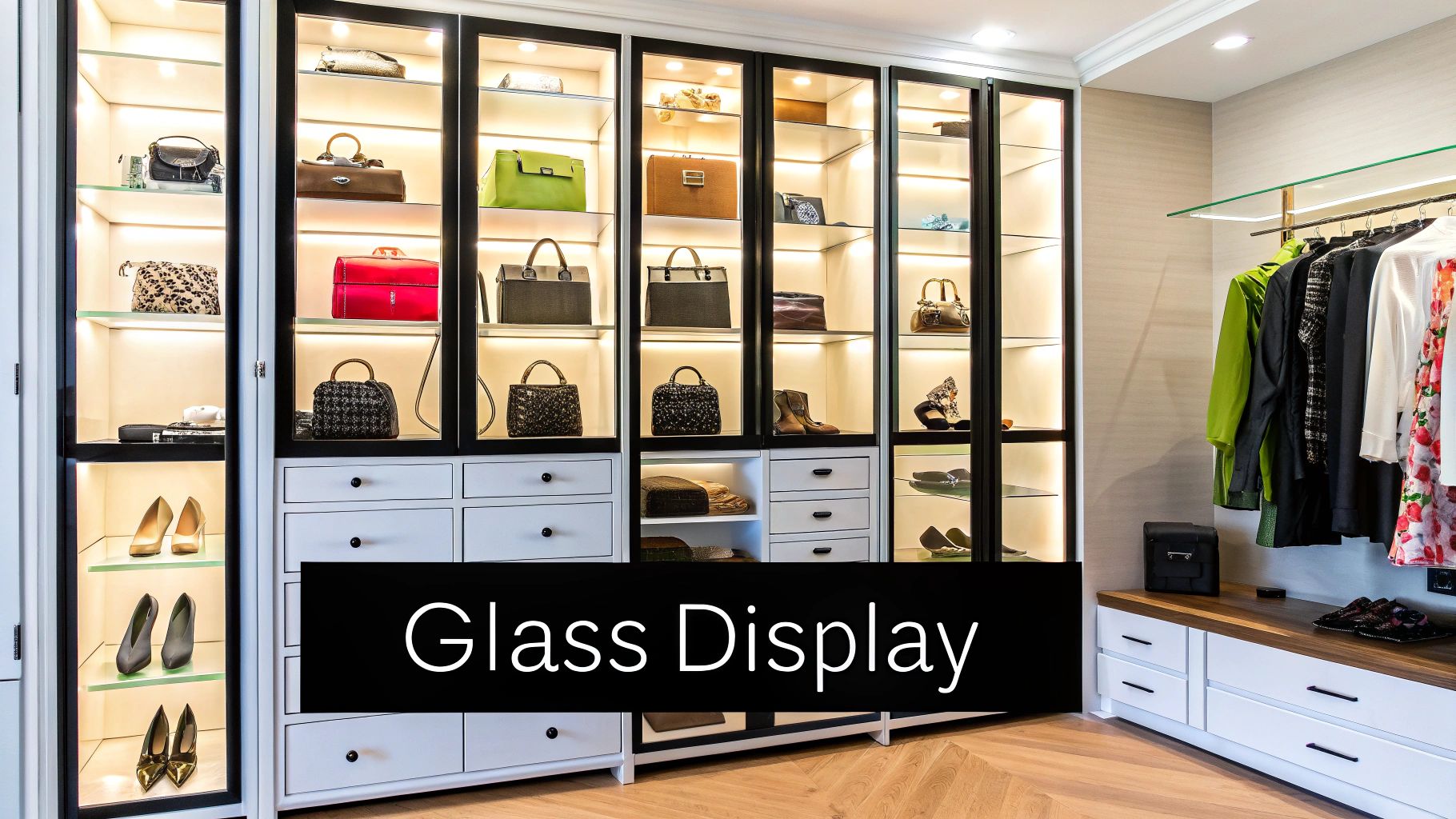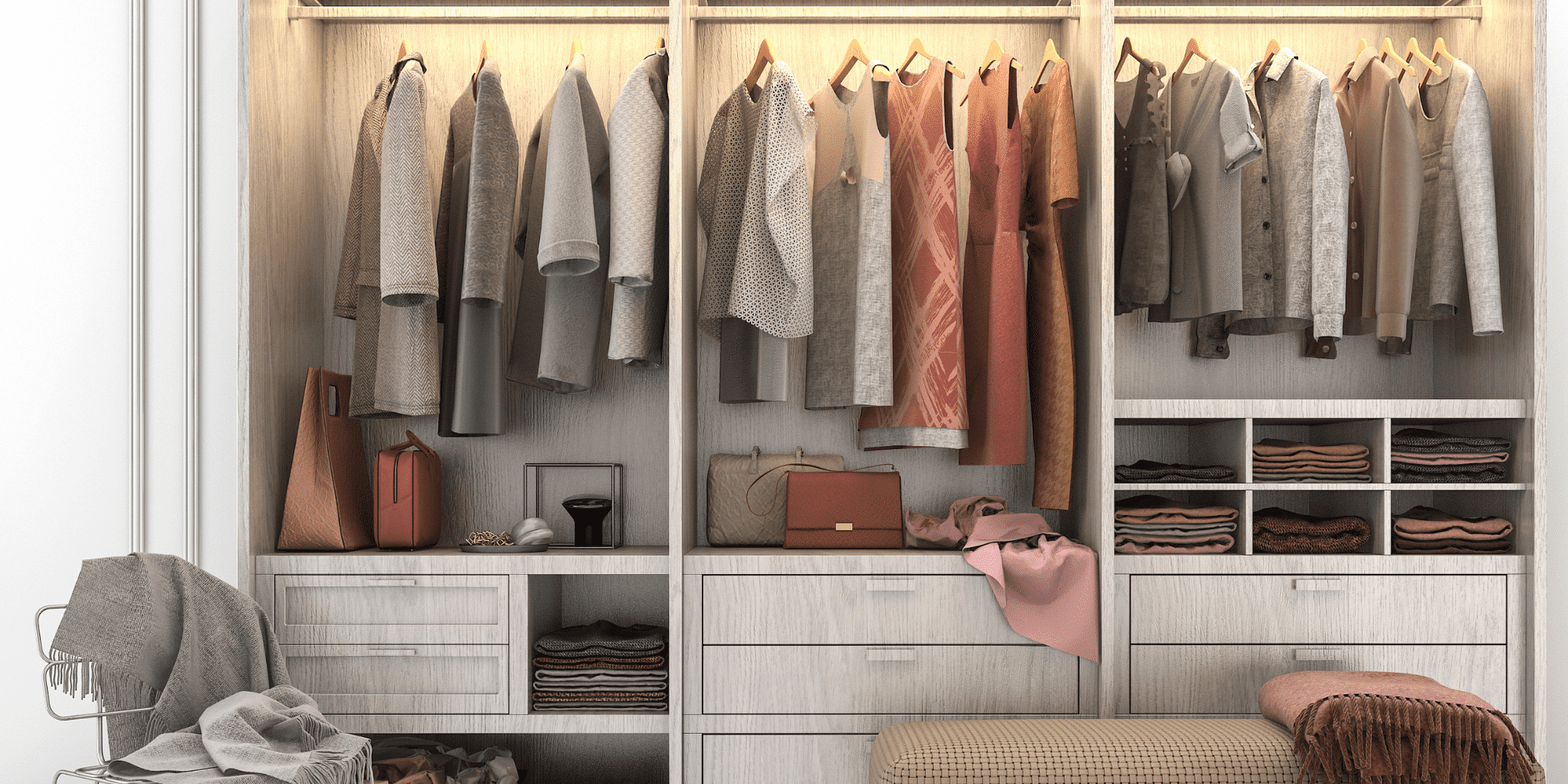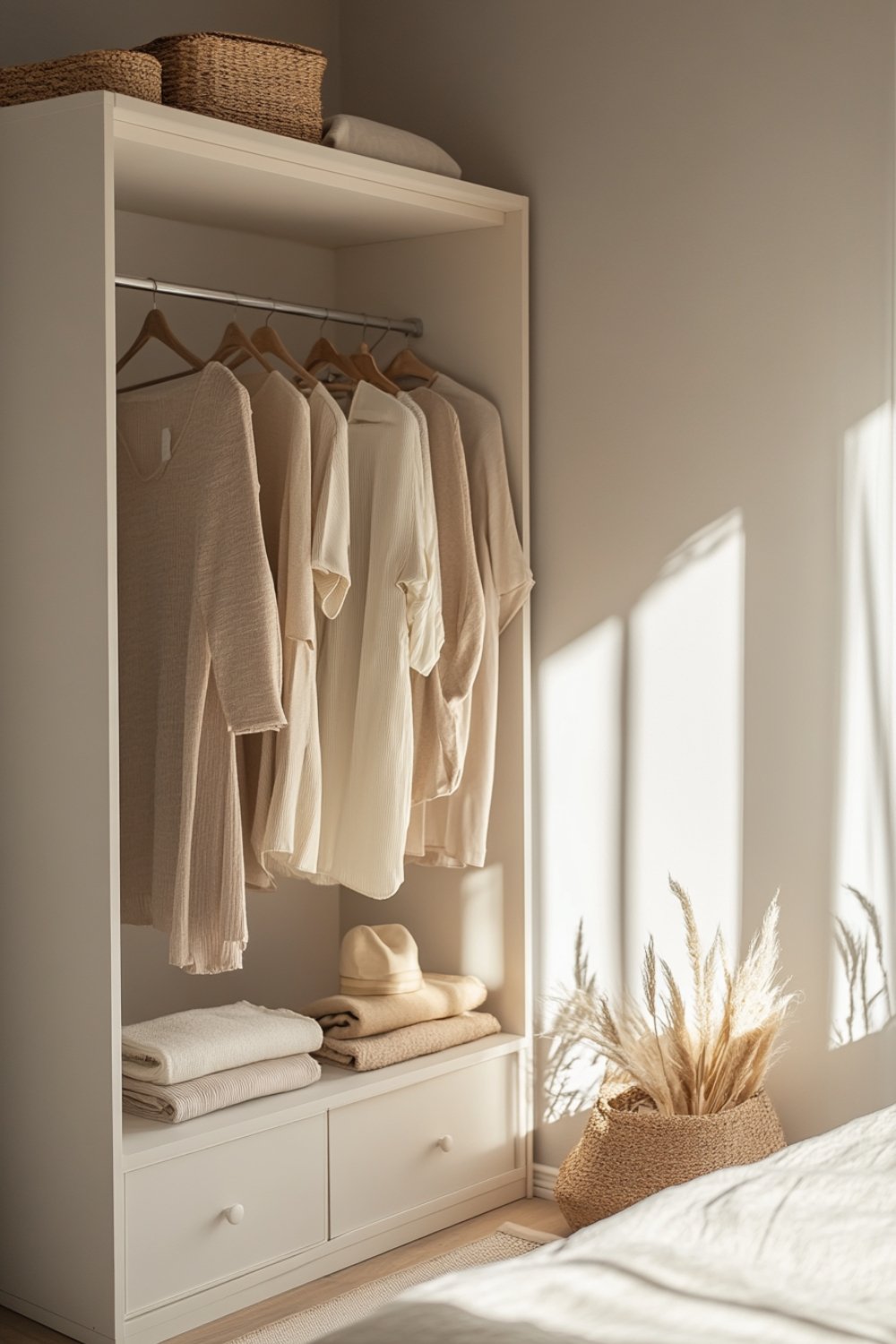Sustainable Wardrobes Redefine Style Consumption with Minimalism

Redefining Style Through Sustainability
Embracing minimalism is more than just a fleeting trend; it is a lifestyle choice that resonates deeply in today’s fast-paced world. As we continuously grapple with overconsumption and environmental challenges, the concept of a sustainable wardrobe emerges as a radical yet practical solution. This approach allows individuals to streamline their clothing choices, promoting not only personal organization but also a healthier planet.
The Intersection of Minimalism and Sustainability
Minimalism invites us to reconsider our relationship with possessions, urging us to prioritize quality over quantity. The shift towards sustainable fashion supports this ideology by encouraging conscious consumption, which leads to:
- Reducing waste
- Supporting ethical brands
- Enhancing personal style
As we explore this transformative journey towards crafting a sustainable wardrobe, we will highlight the Top 5 strategies that can redefine your style and consumption habits. Get ready to discover how minimalism can not only declutter your closet but also enrich your life.
Top 5 Sustainable Wardrobe Strategies: How Minimalism Can Redefine Your Style and Consumption
In a world increasingly dominated by fast fashion and rampant consumerism, a shift towards a sustainable wardrobe provides a refreshing alternative. With environmental concerns rising and ethical considerations coming to the forefront, minimalism offers an appealing blueprint for fashion. By adopting a minimalist approach, you can craft a wardrobe that is both stylish and sustainable, allowing you to engage consciously with the clothing industry. Here, we explore the top five strategies for building a wardrobe that aligns with minimalist principles while advocating for eco-friendly practices.
5. Invest in Quality Over Quantity
The adage “less is more” has never been more relevant. Focusing on quality rather than quantity is essential for building a sustainable wardrobe. While fast fashion offers immediate gratification, it often results in garments that quickly wear out, leading to a cycle of endless purchasing.

When curating your wardrobe, consider these aspects:
- Fabric Quality: Opt for natural fibers like organic cotton, linen, and ethically sourced wool, which tend to be more durable and environmentally friendly.
- Construction: Inspect the garment’s construction; high-quality stitching, reinforced seams, and thoughtful details are indicators of a piece’s potential longevity.
- Brand Ethics: Support brands that prioritize sustainability, focusing on transparency in their supply chains and eco-friendly production methods. Brands like Patagonia, Everlane, and Eileen Fisher are notable examples.
By choosing quality, you not only reduce waste but also curate a selection of pieces that remain stylish season after season, reducing the need for constant wardrobe updates.
4. Embrace the Capsule Wardrobe
The capsule wardrobe concept simplifies the fashion process by distilling your closet down to the essentials. Typically containing 30 to 40 items, a capsule wardrobe is tailored to match your personal style and lifestyle, offering both simplicity and sophistication.
Benefits of this approach include:
- Less Stress: With fewer choices, decision-making becomes simpler, allowing you to enjoy a clutter-free dressing experience.
- Maximized Versatility: A thoughtful selection of pieces enables numerous outfit combinations, ensuring each item serves multiple purposes.
- Clothing Longevity: By regularly wearing and caring for a chosen few, each item lasts longer and maintains its allure.
The capsule wardrobe challenges the habits of overconsumption and encourages a mindful approach to fashion, where each item has purpose and value.
3. Prioritize Second-Hand Shopping
Venturing into the world of second-hand shopping promotes circular fashion, an important aspect of sustainability. Second-hand stores, vintage shops, and platforms like ThredUp and Poshmark reveal a treasure trove of unique items, often at a fraction of the cost of new apparel.
Considerations for second-hand shopping include:
- Unique Finds: Discover rare and distinctive pieces that express individuality.
- Reduced Footprint: Purchasing previously owned items extends their lifecycle, reducing the demand for new manufacturing and its environmental impact.
- Charitable Support: Many thrift stores contribute proceeds to charitable causes, meaning your purchases can also support community initiatives.
Shopping second-hand not only enhances personal style with interesting, diverse items but also aligns with practices that benefit both people and the planet.
2. Focus on Versatility and Timelessness
A minimalist wardrobe thrives on pieces that defy seasonal trends and adapt to various styles and occasions. By focusing on timelessness, you can reduce the need for perpetual updates, ensuring your wardrobe remains relevant and fresh.
Key aspects of this strategy include:
- Multi-Season Appeal: Invest in clothing that transcends seasons, such as a denim jacket or wool sweater, which can be layered or worn alone.
- Seasonless Styles: Embrace classic items like the little black dress, tailored blazer, or well-cut trench coat, which never go out of fashion.
- Adaptable Accessories: Use versatile accessories like scarves, belts, and jewelry to transform basics and stretch the utility of your wardrobe.
This approach not only ensures your wardrobe contains foundational and functional elements but also encourages a playful mix-and-match styling ethos.
1. Mindful Consumption and Ethical Brands
At the heart of a sustainable wardrobe lies the principle of mindful consumption. Recognizing the environmental and social ramifications of fast fashion is crucial in today’s world. Prioritizing purchases from ethical brands promotes responsible production and fair labor practices.
Strategies for fostering mindful consumption include:
- Research: Explore brands’ commitment to sustainability, from sourcing materials to manufacturing processes. Use resources like Good On You to evaluate brands based on ethical benchmarks.
- Sustainable Materials: Seek out materials with a lower ecological footprint, such as Tencel, organic cotton, and recycled polyester.
- Transparency: Appreciate brands that offer transparency in their processes, allowing consumers to understand the impact of their purchases.
Embracing mindful consumption not only mitigates the negative impacts of clothing production but also empowers consumers to advocate for a clothing industry that values people and the planet.
In conclusion, redefining your style through a sustainable wardrobe is a transformative journey that combines ethics with aesthetics. By adopting strategies such as investing in quality, curating a capsule wardrobe, exploring second-hand options, focusing on timeless versatility, and supporting ethical brands, you can evolve your fashion sensibilities to reflect a conscientious lifestyle. Each step forward contributes to a larger movement towards a more sustainable and responsible fashion industry.
| Category | Key Features | Advantages | Disadvantages | Ideal Audience |
|---|---|---|---|---|
| Eco-Friendly Fabrics | Made from organic, sustainable materials such as bamboo, hemp, or recycled textiles. | Reduced environmental impact, promotes biodiversity, and supports sustainable farming practices. | Higher initial cost compared to conventional fabrics, and availability may be limited. | Fashion-conscious consumers who prioritize sustainability in their wardrobes. |
| Quality Over Quantity | Focus on high-quality, timeless pieces that withstand trends and wear. | Longer lifespan, promotes mindful consumption, and supports fair labor practices. | Initial investment can be higher, and it might lead to fewer options in terms of variety. | Individuals seeking to cultivate a curated wardrobe with lasting value. |
| Capsule Wardrobes | A limited selection of versatile clothing items that can be mixed and matched. | Simplifies decision-making and encourages creativity in styling, while reducing clutter. | May require time to build the perfect capsule; adapting to fewer choices can be challenging. | Minimalists and those interested in reducing their wardrobe size for better organization. |
| Second-Hand Shopping | Purchasing pre-owned clothing and accessories from thrift shops or online marketplaces. | Significantly lower costs and contributes to waste reduction and a circular economy. | Quality and sizing issues may arise; there is a risk of buying items that are out of style. | Budget-savvy shoppers and environmentally conscious individuals keen on sustainable fashion. |
FAQs on Sustainable Wardrobes: How Minimalism Can Redefine Your Style and Consumption
What is a sustainable wardrobe, and why is it important?
A sustainable wardrobe consists of clothing items that are produced and sourced in ways that are environmentally friendly. This means utilizing materials that are renewable or recycled, and ensuring that manufacturing processes do not harm the environment. Its importance lies in reducing the fashion industry’s environmental impact, one of the largest polluters globally, while promoting conscious consumption and supporting ethical labor practices.
How does minimalism relate to sustainable fashion?
Minimalism in fashion involves owning fewer clothing items but selecting versatile and high-quality pieces that serve multiple purposes. By focusing on quality over quantity, minimalism naturally aligns with sustainable fashion. It encourages consumers to make thoughtful purchasing decisions, which can lead to longer-lasting wardrobes and a significant reduction in textile waste.
Can adopting a minimalist wardrobe impact my personal style?
Adopting a minimalist wardrobe doesn’t mean sacrificing personal style. In fact, it can enhance it by challenging you to be more creative with fewer pieces. Emphasizing classic and timeless designs allows you to develop a unique style that’s consistently appealing. Many find that embracing minimalism helps them discover what truly resonates with their fashion identity.
Is it more expensive to maintain a sustainable and minimalist wardrobe?
Initially, investing in sustainable and high-quality clothing might seem more expensive. However, these items are designed to last longer, reducing the need to frequently replace them. Over time, this approach can lead to savings as you invest in fewer but better items. Additionally, the mindful consumption encouraged by minimalism often leads to decreased impulse buying, further contributing to cost savings.
How can I start transitioning to a sustainable wardrobe?
Begin by assessing your current wardrobe and identifying pieces that align with your style and needs. Gradually introduce sustainable brands known for ethical practices and choose garments made from organic or recycled materials. Consider the quality and versatility of each new purchase. Additionally, take advantage of second-hand options and wardrobe swaps with friends to diversify your collection without adding to demand for new production.
Conclusion: Redefining Style and Consumption Through Minimalism
In an era marked by consumerism and fast fashion, adopting a sustainable wardrobe through minimalism is not just a lifestyle choice but a necessity for those looking to make a positive impact. As explored in this article, embracing minimalism in fashion has the power to not only transform personal style but also significantly reduce one’s environmental footprint.
Firstly, simplifying your wardrobe encourages mindful purchasing. By prioritizing quality over quantity, wearers can enjoy longer-lasting garments that provide both style and substance. Moreover, reducing the volume of clothing production helps to alleviate the strain on natural resources and lessens waste, making it an essential step in fostering environmental conservation.
Secondly, organizing a minimalist wardrobe enhances personal organization by streamlining choices, reducing decision fatigue, and freeing up physical space for more meaningful items. This shift can lead to a more organized and focused life, highlighting how fewer clothes can indeed lead to more fulfilling experiences.
Thirdly, the aesthetic of minimalism offers timeless style. A well-curated wardrobe ensures that each piece complements the others, achieving a cohesive look that transcends fleeting trends.
Considerations for the Future
As the conversation around sustainability and minimalism continues to evolve, so too should our approach to fashion. Ultimately, minimalism offers a new perspective—not just on clothing, but on our approach to consumption as a whole. The task remains to educate and inspire more individuals to embrace these principles, ultimately leading to a more sustainable future.
This journey is a continuous one, encouraging us all to question our habits and make informed choices. By doing so, we not only enhance our personal wellbeing but also contribute to a larger movement toward sustainability. Looking forward, integrating minimalism into our consumption habits remains a powerful tool for redefining personal style and environmental responsibility alike.


